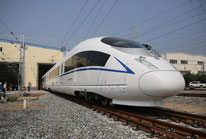

From grocery stores to shopping malls, congested parking lots can be a nightmare – but a few simple tricks could do away with long delays.
A professor has revealed the math behind a perfect parking lot, including the angle of the spaces, direction of traffic flow, and even the shape of the building.
Based on his analysis, the expert says designs should favour one-way traffic and a diagonal space layout rather than a grid to optimize efficiency.

Based on his analysis, the expert says designs should favour one-way traffic and a diagonal space layout rather than a grid to optimize efficiency. 'For a large car park, a 45 degree bay angle leads to an efficiency saving of 23%,’ the math professor writes.
According to David Percy, a mathematics professor at the University of Salford, grid-based parking lots aren’t the most efficient design.
Writing for The Conversation, Percy explains how a space angled at 45 degrees can help to ease up congestion.
‘With a rectangular layout, you need to change your direction of travel by 90 degrees, which requires a substantial lane width to accommodate your turning circle,’ Percy wrote.
‘But for a diagonal layout, the bays on both sides are inclined towards you.
'These require less course adjustment and the access lane can be narrower, so we can fit more parking bays into the same space.
'For a large car park, a 45 degree bay angle leads to an efficiency saving of 23%.’

‘With a rectangular layout, you need to change your direction of travel by 90 degrees, which requires a substantial lane width to accommodate your turning circle,’ Percy wrote.
Along with this, Percy explains that this design wouldn’t require drivers to change direction as much as they would with a grid, making it easier and safer to reverse from each space.
Spaces should provide enough room for pedestrians to easily get in and out of their cars, and allow vehicles to enter without having to cut corners.
Parking lots can also be made better by channeling the traffic into one direction with one-way flow systems, the mathematician says, which also allows for narrower lanes than a two-way flow.

Percy explains that the angled design wouldn’t require drivers to change direction as much as they would with a grid, making it easier and safer to reverse from each space. Parking lots can also be made better by channeling the traffic into one direction, he says.
Exits and ramp design also play a role, and the professor points out that the number of exits should at least match the number of entrances, and ramp placement should ensure there are no dead ends.
Some of these design tweaks can be achieved simply through repainting – but, Percy also has advice for those building from scratch.
By constructing a spiral-shaped garage, designers could meet the needs of drivers and pedestrians, and optimize the available space.
‘If one were to design a new car park from scratch, one of the best of all systems is epitomised by the helical car park design,’ Percy concludes.
‘With one entrance, simple traffic flow and one exit, it is safe for pedestrians and uses the available space efficiently. Crucially, it is also reasonably pretty.’
 World's fastest bullet train to start operating next month
World's fastest bullet train to start operating next month Huangluo: China's 'long hair village'
Huangluo: China's 'long hair village' Spectacular bridge with one of the tallest piers in the world
Spectacular bridge with one of the tallest piers in the world Magnificent view of Hukou Waterfall
Magnificent view of Hukou Waterfall A glimpse of Stride 2016 Zhurihe B military drill
A glimpse of Stride 2016 Zhurihe B military drill US Navy chief tours Liaoning aircraft carrier
US Navy chief tours Liaoning aircraft carrier Chinese American woman wins Miss Michigan
Chinese American woman wins Miss Michigan Centenarian couple takes first wedding photos
Centenarian couple takes first wedding photos Traditional Tibetan costumes presented during fashion show
Traditional Tibetan costumes presented during fashion show Top 10 livable Chinese cities
Top 10 livable Chinese cities Top 20 hottest women in the world in 2014
Top 20 hottest women in the world in 2014 Top 10 hardest languages to learn
Top 10 hardest languages to learn China’s Top 10 Unique Bridges, Highways and Roads
China’s Top 10 Unique Bridges, Highways and Roads Corrupt officials come up with creative ways to avoidpunishment
Corrupt officials come up with creative ways to avoidpunishment Death of sick teacher highlights medical rights
Death of sick teacher highlights medical rights An increasingly active Panchen Lama is expected to mitigateDalai's influence
An increasingly active Panchen Lama is expected to mitigateDalai's influence Hugo Award-winning author Liu Cixin talks about the future ofChinese sci-fi
Hugo Award-winning author Liu Cixin talks about the future ofChinese sci-fiDay|Week